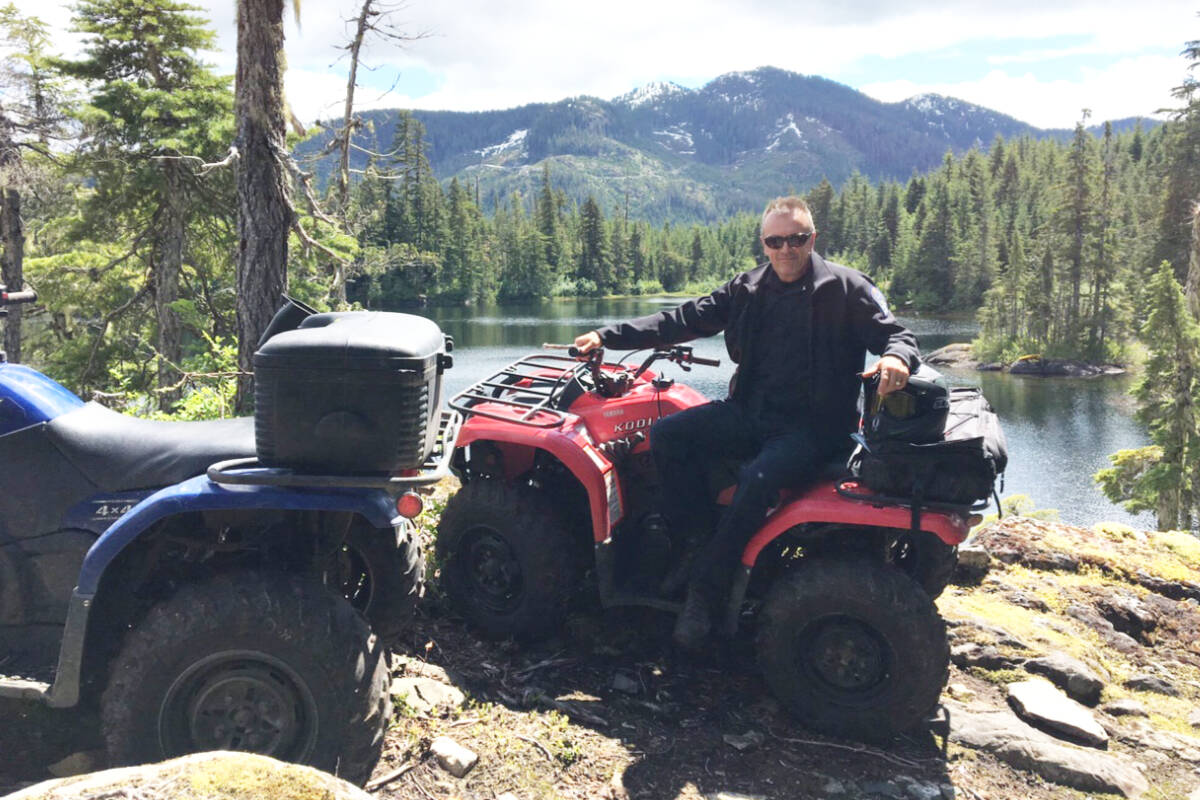Bears are not being driven away by development, says a conservation officer with more than three decades of experience.
“I keep hearing people say bears are being forced out by development,” said Peter Pauwels, who recently retired after 30 years of service, the vast majority of that working in the Capital Region and Southern Vancouver Island.
“The fact is the areas being developed like Bear Mountain (on Skirt Mountain) had no bears 25 years ago. Now it’s developed, and we have a resident bear population up there.”
Bears are expanding their territory and moving back into areas like Metchosin, the West Shore and the Saanich Peninsula that they haven’t lived in for years, Pauwels said.
“Bears in the Saanich Peninsula were unheard of 25 years ago,” he said. “Now we get calls all the time. We used to get five calls a year for bears in the early 1990s, and now we get 700 plus a year.”
Pauwels, who grew up in Metchosin, said he never saw a bear in that area until he was 18.
A look at the history of bears in the area provides a better understanding of what’s led to the current situation in the Capital Region and South Vancouver Island.
“The way we deal with problem wildlife has changed drastically since I started in 1992,” he said. “We had one or two bear calls a year, and it’s important to remember that we had no bear calls in the ‘70s. They were non-existent on the South Island. Other than a few sightings in Sooke and beyond, there was nothing in the CRD.”
A major reason for that is after settlers moved into the area in the 1880s, bears were shot by farmers.
“They were basically exterminated to protect livestock and income,” he said. “Anything that was a threat like cougar bears, cougars, wolves and eagles were shot. There was a bounty on cougars that only ended in the late 1950s. It took a long time for the bear population to return, not until the 1990s. Bears bounced back because there were less farms and less of an inclination to kill predators. Bears were killed by COs once they were habituated. There was no tolerance for habituated behaviour and as soon as it became a problem, we dealt with them.”
While statistics in 1998 show there was one bear complaint in June of that year, now the total on average in June is in the hundreds. Pauwels traces the change in the public’s attitude to the late 1990s.
“Our approach evolved in dealing with predatory wildlife, with an increased focus on preventing conflict,” Pauwels said. “Instead of killing bears that got into people’s garbage, we tell people to lock up their garbage. We killed far fewer bears and did our best to educate the public with other preventative measures.”
Bear-proofing properties, including fruit trees, bird feeders, and pet food, are now stressed, as well as other measures such as putting up electric fences and keeping livestock in barns, but primarily “garbage is always the big one,” he said.
“Success with those measures led to fewer bears killed,” Pauwels said. “But the other side of that is there are more bears around. That trend has continued since 2000. Bears have expanded their territory. Now there are lots on the West Shore, especially Metchosin, and now we get calls all the time. Bears have moved back into areas they haven’t lived in for nearly a hundred years. It doesn’t matter how much land is developed because these bears are not leaving. There’s enough green space, and they’re smart enough to adapt to living among people.”
“I don’t think there’s a solution, but if people do a better job of dealing with attractants, you can reduce the number of time bears will spend rummaging through back yards and coming into contact with people,” Pauwels said. “You’re never going to get to 100 per cent, even with the help of volunteer groups like Wild Wise and Wildlife Advocates Collective.”
“I do want to tip my hat to those groups, and their work is invaluable in educating the public and gaining voluntary compliance. Conservation officers don’t have the time or resources to be garbage police. People must remember that bears are only a small part of our jobs and what we’re supposed to be responsible for. We’re mostly known for dealing with problem wildlife, but fish and game enforcement is an important part of what we do as well.”
news@sookenewsmirror.com
Like us on Facebook and follow us on Twitter

